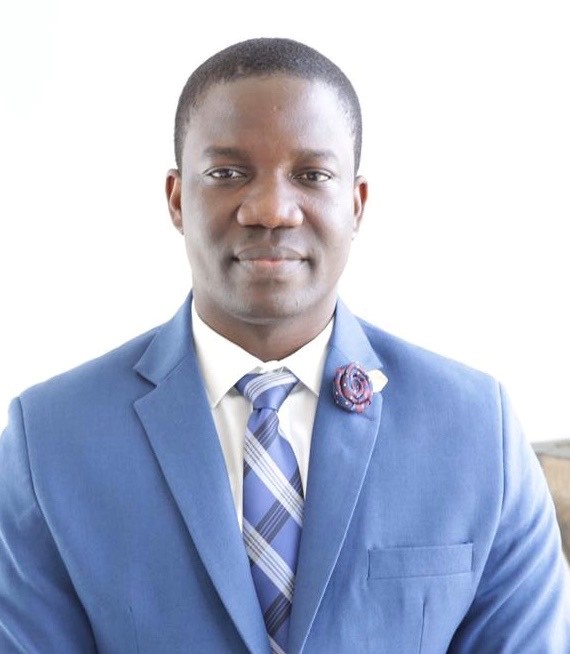Africa undoubtedly has the fastest urban growth rate in the world. Research by the Organisation for Economic Co-operation and Development (OECD) indicates that by 2050, Africa’s cities will be home to almost a billion additional people. As these cities grow, it’s important that the appropriate urban infrastructure – from roads and transport systems to water and waste management systems – is in place to enhance wellbeing and productivity for people living in these areas. Africa’s urban transition also offers opportunities to proactively address critical challenges such as digital transformation and climate change, to ensure cities become centres of sustainable, climate-resilient and inclusive growth.
In fact, at the 2021 International Monetary Fund (IMF)/World Bank Spring meeting held in Washington, DC, there were in-depth conversations with some of the world’s leading experts on the most urgent development issues of our time, more importantly around how Africa Sovereigns could equally obtain funding and sustain debt amid the ongoing pandemic. Now, one year in, COVID-19 has aggravated debt distress in the poorest countries, and that could hurt their ability to finance their future. Reducing debt would allow countries to focus resources where they’re really needed on building a green, resilient, inclusive recovery.
Developing countries had a record $55 trillion in debts even before COVID-19 hit and the situation has further deteriorated. That sustainability is a growing concern as countries respond to the pandemic, struggling with urgent financing needs. This requires Africa sovereigns to rethink debt and funding strategies to meet economic development needs. Important to mention that Countries like Ghana and Angola have gone through a reprofiling of its debt aimed at easing the pressure.
The pandemic has caused a major blow to some of the world’s poorest countries, causing a recession that could push more than estimated 100 million people into extreme poverty. That is why the World Bank and the IMF urged G20 countries to establish the Debt Service Suspension Initiative (DSSI). The DSSI is helping countries concentrate their resources on fighting the pandemic and safeguarding the lives and livelihoods of millions of the most vulnerable people.
Since it took effect on May 1, 2020, the initiative has delivered more than $5 billion in relief to more than 40 eligible countries. In all, about 73 countries have been eligible for a temporary suspension of debt-service payments owed to their official bilateral creditors.
In fact, the G20, the DSSI initiative is very useful and very recommendable, but African Sovereigns’ have to find a solution that enables them to have more breathing space on the medium term and to release these financial resources to address the social needs on health and on financial support to the families.
DSSI borrowers are committed to use freed-up resources to increase social, health, or economic spending in response to the crisis and this also in a way aligns to the UN Sustainable Development Goals. They have committed to disclose all public sector financial commitments (involving debt and debt-like instruments). They have also committed to limit their non-concessional borrowing to levels agreed under IMF programs and the World Bank’s non-concessional borrowing policies. So, with this said, what financing options are available for Africa Sovereigns? I may not be able to highlight or discuss all, but I believe below shall help.
How DSSI Benefits Low-Income Countries (The estimates are current as of May 13, 2021)
| Country4 | DSSI Participation5 | Risk of external debt distress2 | Risk of overall debt distress2 | Date of DSA Publication | Potential DSSI Savings May-December 2020 | Potential DSSI Savings January-June 2021 | ||
| % of GDP | USD millions | % of GDP | USD millions | |||||
| Côte d’Ivoire | Yes5 | Moderate | Moderate | 20-Dec | 0.4 | 224 | 0.1 | 67.7 |
| Guinea | Yes5 | Moderate | Moderate | 20-Dec | 0.5 | 70.6 | 0.2 | 29.2 |
| Liberia | Yes | Moderate | High | 20-Dec | 0.1 | 2.3 | 0.1 | 2.2 |
| Benin | No | Moderate | Moderate | 20-Dec | 0.1 | 16.1 | 0.1 | 15.2 |
| Rwanda | No | Moderate | Moderate | 20-Dec | 0.1 | 13.2 | 0.1 | 11.7 |
| Burkina Faso | Yes5 | Moderate | Moderate | 20-Nov | 0.2 | 24.2 | 0.1 | 12.7 |
| Somalia | No | In distress | In distress | 20-Nov | 0 | 1.7 | 0 | 1.4 |
| Cabo Verde | Yes5 | High | High | 20-Oct | 0.9 | 18 | 0.8 | 15.8 |
| Cameroon | Yes5 | High | High | 20-Oct | 0.9 | 337.3 | 0.7 | 271.9 |
| Malawi | Yes5 | Moderate | High | 20-Oct | 0.2 | 17.4 | 0.2 | 16.7 |
| Niger | Yes5 | Moderate | Moderate | 20-Oct | 0.2 | 26 | 0.2 | 24 |
| Mauritania | Yes5 | High | High | 20-Sep | 1.1 | 90.8 | 1.3 | 102.5 |
| Guyana | No | Moderate | Moderate | 19-Aug | 0.3 | 16.9 | 0.3 | 13.6 |
| Lesotho | Yes5 | Moderate | Moderate | 20-Jul | 0.4 | 9.8 | 0.3 | 5.9 |
| Zambia | Yes5 | High | High | 19-Jul | 0.7 | 165.4 | 0.8 | 184 |
| Djibouti | Yes5 | High | High | 20-May | 1.7 | 56.8 | 2 | 66.7 |
| Uganda | Yes5 | Low | Low | 20-May | 0.2 | 91.1 | 0.3 | 107 |
| Kenya | Yes | High | High | 20-May | 0.7 | 630.8 | 0.7 | 620.3 |
| Congo, Dem. Rep. | Yes5 | Moderate | Moderate | 20-Apr | 0.3 | 156.3 | 0.2 | 105.9 |
| Ethiopia | Yes5 | High | High | 20-Apr | 0.5 | 472.9 | 0.4 | 359.6 |
| Mozambique | Yes5 | In distress | In distress | 20-Apr | 1.9 | 292.6 | 1.6 | 250.2 |
| Togo | Yes5 | Moderate | High | 20-Apr | 0.4 | 26.6 | 0.3 | 23.9 |
| Grenada | Yes | In distress | In distress | 20-Apr | 0.7 | 8 | 0.4 | 5.1 |
| Ghana | No | High | High | 20-Apr | 0.6 | 377.9 | 0.3 | 180.2 |
| Madagascar | Yes5 | Moderate | Moderate | 21-Mar | 0.2 | 35.5 | 0.1 | 8.5 |
| Sierra Leone | Yes5 | High | High | 21-Mar | 0.2 | 8.1 | 0.2 | 6.9 |
| South Sudan | No | High | High | 21-Mar | ||||
| Burundi | Yes5 | High | … | 15-Mar | 0.2 | 4.5 | 0.1 | 2.8 |
| Mali | Yes5 | Moderate | Moderate | 21-Feb | 0.5 | 82.5 | 0.3 | 46.3 |
| Sao Tome and Principe | Yes5 | In distress | In distress | 21-Feb | 0.4 | 1.6 | 0.7 | 2.8 |
| Central African Republic | Yes5 | High | High | 21-Jan | 0.3 | 7.4 | 0.4 | 8.7 |
| Gambia, The | Yes5 | High | High | 21-Jan | 0.6 | 10.2 | 0.4 | 6.4 |
| Senegal | Yes5 | Moderate | Moderate | 21-Jan | 0.6 | 139.2 | 0.4 | 97.7 |
| Tonga | Yes5 | High | High | 21-Jan | 1.2 | 6.3 | 1.2 | 6.2 |
| Guinea-Bissau | Yes | High | High | 21-Jan | 0.1 | 2.1 | 0.1 | 1.7 |
| Congo, Rep. | Yes5 | In distress | In distress | 20-Jan | 1.4 | 181.8 | 1.5 | 190.5 |
| Kiribati | No | High | High | 19-Jan | ||||
| Tanzania | Yes5 | Low | … | 18-Jan | 0.2 | 138.6 | 0.2 | 109.6 |
| Angola3 | Yes5 | … | … | 1.9 | 1734.9 | 1.4 | 1292.8 | |
| Nigeria3 | No | … | … | 0 | 123.5 | 0 | 155.2 | |
2Reflects published DSA ratings as of end-March 2021.3Not covered under joint Bank-Fund Debt Sustainability Framework for Low-Income Countries.4IDA countries as of FY 20, and Angola5 Reflects if a country has requested participation in 2020 and 2021
Innovative financing solutions
Leverage on Zero Coupon Bonds
The use of Zero Coupon Bonds to raise funding is not something new but it is becoming popular. A lot for Countries have not tapped into this financing option to raise the needed funding to support Economic growth. That notwithstanding, Ghana has shown the way. If we recall, Ghana successfully raised USD3 billion on the International Debt Capital Market using a 4-year zero-coupon bond tranche. The issuance was two times oversubscribed.
This historic bond issuance was a strong signal that investors have confidence in Ghana plan for debt sustainability, economic recovery and growth’’ USD400 million of the money raised to refinance domestic debt enabled Ghana to save around USD200 million over the four years. As a result of the zero coupon, the bond does not make periodic interest payments, but is sold at a discount to its value at maturity.
This is significant as it enables Governments to create fiscal space to build the economy back better. Typically, zero-coupon bonds don’t make periodic interest payments during the tenor of the bond but is sold at a discount to its value at maturity.
Export Credit Agency (ECA) backed Financing
African Sovereigns must rethink using Export Credit Agencies (ECAs) to help finance medium to long term projects by providing direct credit, credit guarantees, or credit insurances. ECAs are institutions whose principal objective is to promote exports from their own country. ECAs may be private companies or quasi-governmental institutions, and their precise status varies from country to country.
Examples of ECAs include the Export Credits Guarantee Department (ECGD) (operational name now UK Export Finance) (UK), the Export-Import Bank of the United States (United States), Compagnie Francaised’Assurance pour le Commerce Exterieur (COFACE) (France) and Euler Hermes Kreditversicherungs-AG (Germany), EKN.
ECAs can offer both ‘tied’ financing (i.e. financing linked to a supply of goods or services from the ECAs country) and ‘untied’ financing which is not linked in this way. In Ghana, Ministry of Finance (MoF) has been supported with various EKF supported infrastructure facilities for the development of the Health and other sectors of the Economy. This is a classic case of improving health care services.
Focus on Sustainable Linked Bonds
Sustainability-Linked Bonds (“SLBs”) are any type of bond instrument for which the financial and/or structural characteristics can vary depending on whether the issuer achieves predefined Sustainability/ ESG objectives.
The UN’s 17 Sustainable Development Goals (SDGs) are amongst the most ambitious projects humanity has ever attempted. They represent our best hope of tackling the most serious challenges facing our societies and our planet. The investment required to meet the targets by 2030 cannot be provided by governments and NGOs alone. The private sector has a critical role to play if we are, collectively, to achieve the SDGs
Key four indicators such as water and sanitation services; power; telecoms (digital access); and transport infrastructure – that sit under three of the SDGs for example challenging social economy issues facing African countries. There is therefore the need for Africa`s Sovereigns to link some of these investment needs to a Sustainable Finance Framework.
Future-Flow Securitization for Development
Securitization is a fairly recent financial innovation. The first securitized transactions in the United States for example occurred in the 1970s and involved the pooling and repackaging of home mortgages for resale as tradable securities by lenders. Since then, securitized markets have grown into other markets around the world. A typical future-flow structure involves the borrowing entity (or originator) selling its future product (receivable) directly or indirectly to an offshore special purpose vehicle (SPV). The SPV issues the debt instrument.
In Ghana, such innovative solution was adopted when Energy Sector went into Crises. Government Securitise cash flows from Petroleum consumption to defray Energy sector crises through Debt Issuance. The same solution was done within the Educational sector where 2.5% sale tax levy were securitised to raise long term debt for the Ghana Education Trust Fund. African Sovereigns can replicate same structures to bridge development funding gaps.
Major rational for Securitisation is that, from the investors’ point of view, the attractiveness of future-flow securities lies in their good credit rating and their stellar performance in good as well as bad time.
The innovative financing options to fund Africa are non-exhaustive. What is important is leadership`s commitment to tackle the issues and challenges facing Africa to ensure it take its rightful place. It is obvious that Africa is facing an infrastructure funding deficit per year. This is largely due to the poor record of reaching the bankability stage on previous projects. There are also other contributing factors such as social and environmental requirements, which the continent is struggling to meet. We therefore need to rethink the financing options to meet the needed growth.
Thank you for reading.
Disclaimer: The views expressed are personal views and doesn’t represent that of the media house or institution the writer works
Credit: Miriam Amoako, World Bank and IMF publications, DSSI publications
About the writer
Carl is a Finance and Investment professional, managing local and global Investors, Intermediaries, Banks and Non-Bank Financial Institution relationships with an International Bank in Ghana. Contact: [email protected], Cell: +233-200301110










